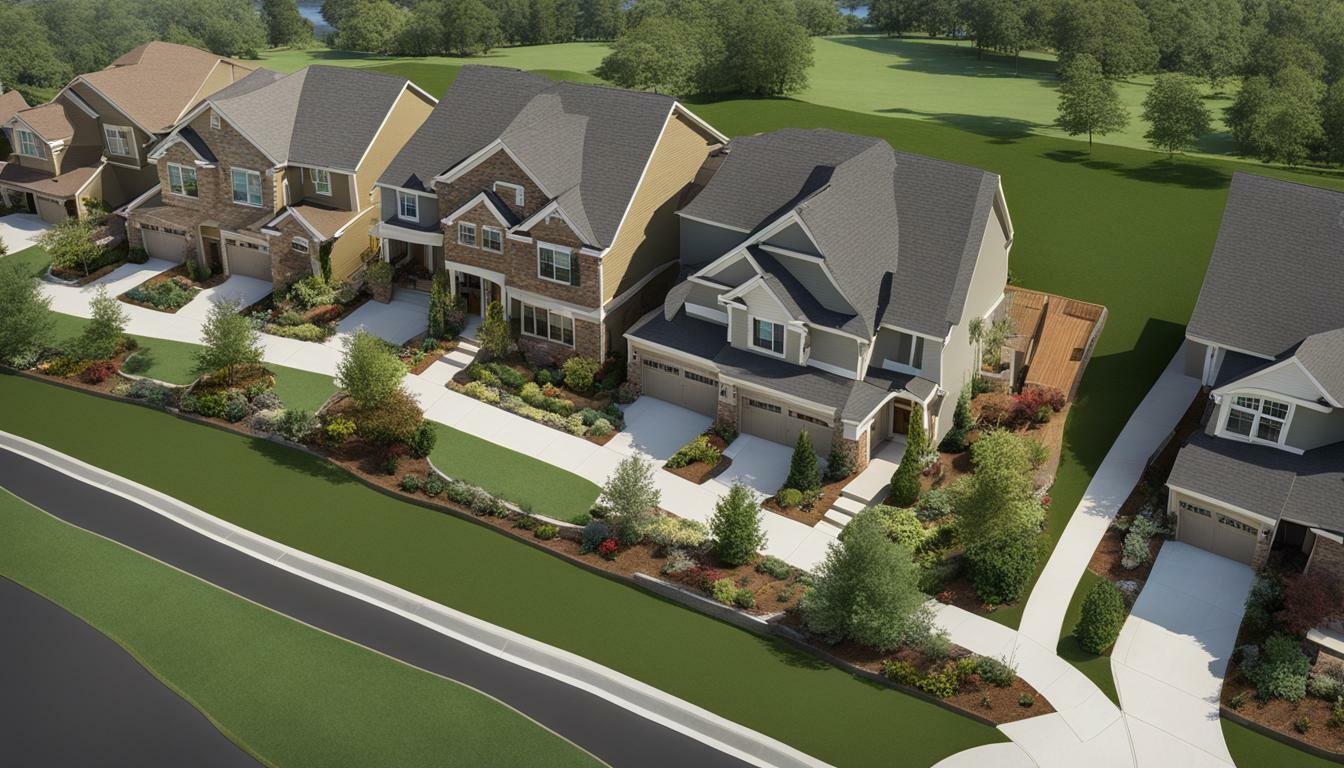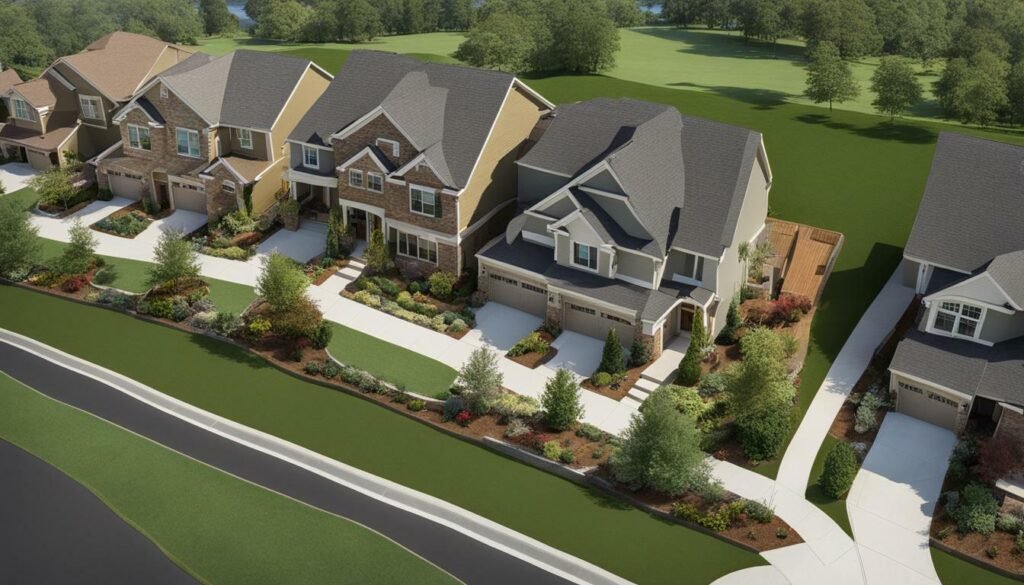 Planned Unit Developments (PUDs) have become an increasingly popular choice for real estate developers in recent years. In the property market, PUDs are a term often used to describe a type of residential or mixed-use development that incorporates a range of housing types and community amenities.
Planned Unit Developments (PUDs) have become an increasingly popular choice for real estate developers in recent years. In the property market, PUDs are a term often used to describe a type of residential or mixed-use development that incorporates a range of housing types and community amenities.
Simply put, a PUD is a planned community that allows developers to create a unique neighborhood that offers a variety of housing options, community facilities, and open spaces. The concept of PUDs provides developers with a lot of flexibility in terms of design and land use, which can make them an attractive investment option in the real estate industry.
However, PUDs are not without their regulations. Local governments often have specific zoning ordinances in place to ensure that PUDs are developed in a way that is consistent with the broader community’s needs and goals. Design guidelines and master plans may also need to be adhered to, making it important for investors and developers alike to conduct thorough research before getting involved in a PUD project.
Contents
- 1 Understanding Planned Unit Developments
- 2 Benefits of PUDs in Real Estate
- 3 Regulations and Guidelines for PUDs
- 4 Financing and Investing in PUDs
- 5 Conclusion
- 6 FAQ
- 6.1 Q: What is a Planned Unit Development (PUD) in real estate?
- 6.2 Q: How do PUDs differ from traditional residential developments?
- 6.3 Q: What are the benefits of investing in PUDs?
- 6.4 Q: What regulations and guidelines govern PUDs?
- 6.5 Q: How does financing and investment work in PUDs?
- 6.6 Q: What should investors consider before getting involved in a PUD project?
Understanding Planned Unit Developments
Planned Unit Developments (PUDs) are a type of residential development that differs from traditional subdivisions. In a PUD, the developer has more flexibility in the design and layout of the community. It allows for a mix of residential, commercial, and industrial land uses. The aim of PUDs is to create a more efficient use of land and to provide residents with access to an array of amenities.
A PUD may consist of single-family homes, townhouses, apartments, retail stores, offices, and even parks and open spaces. This mixed-use concept allows for a better integration of different types of properties, creating a cohesive community feel. Moreover, PUDs are more flexible than traditional developments in terms of design and construction, allowing developers to create unique and innovative properties.
The primary goal of PUDs is to provide residents with a sense of community and to offer them easy access to essential amenities. PUDs often include swimming pools, playgrounds, clubhouses, and other recreational facilities, as well as pedestrian-friendly paths and trails. By providing open spaces, PUDs help maintain a more natural environment and provide a peaceful oasis amid the hustle and bustle of urban life.
Overall, PUDs are an attractive option for those who are looking for a more inclusive and diverse community, with access to a variety of amenities and services. They are ideal for mixed-use development, where residents can live, work, and play in the same neighborhood.
Benefits of PUDs in Real Estate
Planned Unit Developments or PUDs have several benefits over traditional residential developments. As such, they’ve become increasingly popular in the property market, especially in areas where land is scarce. In this section, we’ll explore the advantages of investing in PUDs.
PUD Benefits
Flexibility: One of the key benefits of PUD zoning is its flexibility. Developers can design developments that incorporate a mix of residential, commercial, and retail spaces, offering a more diverse range of opportunities than traditional single-use developments.
Community Amenities: Large-scale PUDs can also offer community amenities such as parks, pools, and community centers. These amenities promote social interaction and help create a sense of community, making PUDs an attractive option for families and individuals seeking a tight-knit neighborhood experience.
Open Spaces: PUDs often incorporate open spaces such as greenbelts, walking paths, and bike trails. These areas provide residents with access to nature and outdoor recreation opportunities, which is essential for maintaining a healthy and active lifestyle.
Overall, PUDs offer developers and investors a range of benefits that traditional residential developments don’t, such as greater flexibility in land use, access to community amenities, and open spaces. As such, they’ve become an increasingly popular option in the property market, offering unique investment opportunities to those looking to get into the real estate industry.
Regulations and Guidelines for PUDs
In the United States, PUD is a term that is regulated by zoning ordinances and local government. Before any PUD project can be approved, it must adhere to the master plan and design guidelines set by the local governing body.
The process involved in obtaining approval for a PUD project can be complex and time-consuming. The regulations often vary significantly from state to state, and what may be allowed in one jurisdiction may not be possible in another.
For developers and investors looking to get involved in PUD projects, it is essential to understand the local zoning ordinances and regulations and consult a professional who has experience in navigating the approval process.
The local government plays a significant role in regulating the development of PUDs. The government must ensure that the project meets the necessary requirements while also addressing the concerns of the local community.
Master plans are used to guide the development of PUDs. The master plan is a comprehensive document that outlines the requirements for the development of the project and sets guidelines for design, layout, and land use. The plan is a crucial component in the regulation of PUDs because it ensures that the development is consistent with the overall vision of the community.
Zoning ordinances play a critical role in regulating PUDs. The ordinances specify the permitted use of land and establish the standards for building codes, infrastructure, and site design. A PUD project must be zoned appropriately to allow for the proposed land use and development of the site.
Overall, PUDs are subject to stringent regulations and guidelines, and it is essential for developers and investors to understand the policies and procedures that govern the development of PUDs before investing in them.
Financing and Investing in PUDs
Investing in a PUD can offer substantial benefits, but it’s essential to have a thorough understanding of the financing options available and the potential risks. Developers and investors are the primary sources of financing for PUDs, but banks also play a crucial role in this sector. Working with banks can be challenging, and PUD financing requires extensive research and risk assessment.
Before getting involved in a PUD project, it’s important to establish a relationship with a bank that specializes in financing these developments. Banks evaluate PUD projects based on various factors, including the developer’s experience, the project’s location, and the current state of the real estate market. Banks also consider the project’s financial projections and the developer’s track record.
Developers play a significant role in PUD financing, providing the initial capital required to start the project. Developers typically invest their capital, secure private financing, or leverage their assets to obtain funding for PUDs. Additionally, developers may work with property investment firms to raise capital for these projects.
Investors are also major players in PUD financing, providing funding in exchange for equity in the project. Investors may include individuals, pension funds, and insurance companies. However, investing in a PUD involves substantial financial risk, and investors must conduct extensive due diligence to minimize those risks.
Overall, PUD financing requires a combination of private and public funding, including government grants and loans. Thorough risk assessment and financial modeling are essential for successfully financing a PUD project. Developers and investors must have a solid understanding of the zoning, regulations and guidelines that govern PUDs. They must also have a thorough understanding of the potential benefits and risks associated with these developments.
Conclusion
In conclusion, Planned Unit Developments (PUD) are a type of real estate development that offer several benefits to investors and residents alike. PUDs provide greater flexibility in terms of zoning and land usage, which allows developers to create mixed-use developments that incorporate commercial and residential spaces. Additionally, PUDs typically come with community amenities such as fitness centers, parks, and playgrounds, which help create a sense of community and enhance quality of life.
Despite these benefits, investing in PUDs comes with risks that must be carefully assessed. Developers and investors should conduct thorough research and due diligence before getting involved in a PUD project. It is also important to adhere to local regulations, zoning ordinances, and master plans, which can vary from one municipality to another.
Key Takeaways
- PUDs are a type of real estate development that offer flexibility in zoning and land usage.
- PUDs often include community amenities such as fitness centers, parks, and playgrounds.
- Investing in PUDs comes with risks that must be carefully assessed.
- Compliance with local regulations, zoning ordinances, and master plans is crucial for PUD development.
In summary, PUDs can be a lucrative investment opportunity for developers and investors, but it is important to balance the potential rewards with the risks involved. Conducting thorough research, due diligence, and adhering to local regulations are key factors to consider before investing in a PUD project. Ultimately, with proper planning and execution, PUDs can be an excellent way to create vibrant and thriving communities that enhance quality of life for residents.
FAQ
Q: What is a Planned Unit Development (PUD) in real estate?
A: A PUD, or Planned Unit Development, is a type of residential or mixed-use development that offers a combination of housing, commercial spaces, and open areas. It is designed to provide flexibility and often includes community amenities.
Q: How do PUDs differ from traditional residential developments?
A: Unlike traditional residential developments, PUDs typically have more flexibility in terms of zoning and design. They often incorporate a variety of housing types and can include commercial spaces, recreational facilities, and open spaces within the development.
Q: What are the benefits of investing in PUDs?
A: Investing in PUDs offers several benefits. They provide flexibility in terms of property use, allowing for a mix of residential and commercial spaces. PUDs also often include community amenities such as parks, playgrounds, and swimming pools, enhancing the overall quality of life for residents. Additionally, the presence of open spaces can create a more appealing and attractive environment.
Q: What regulations and guidelines govern PUDs?
A: PUDs are subject to regulations and guidelines set by local governments and zoning ordinances. These regulations ensure that the development adheres to specific standards and aligns with the overall master plan for the area. Developers must obtain approvals and permits from the appropriate authorities before commencing construction.
Q: How does financing and investment work in PUDs?
A: Financing for PUDs typically involves collaboration between developers, investors, and financial institutions such as banks. Developers and investors secure funding to cover the costs of land acquisition, construction, and infrastructure development. Banks evaluate the project’s viability and assess potential risks before providing financing.
Q: What should investors consider before getting involved in a PUD project?
A: Before investing in a PUD project, it is essential to conduct a thorough risk assessment. Consider factors such as market demand, the reputation of the developer, and the location of the development. Additionally, researching local regulations, zoning ordinances, and the master plan for the area will help investors make informed decisions.
- Can you become a millionaire by investing in real estate? - November 7, 2023
- What form of AI is most commonly used in real estate? - November 5, 2023
- What is the AI real estate market forecast? - November 3, 2023
